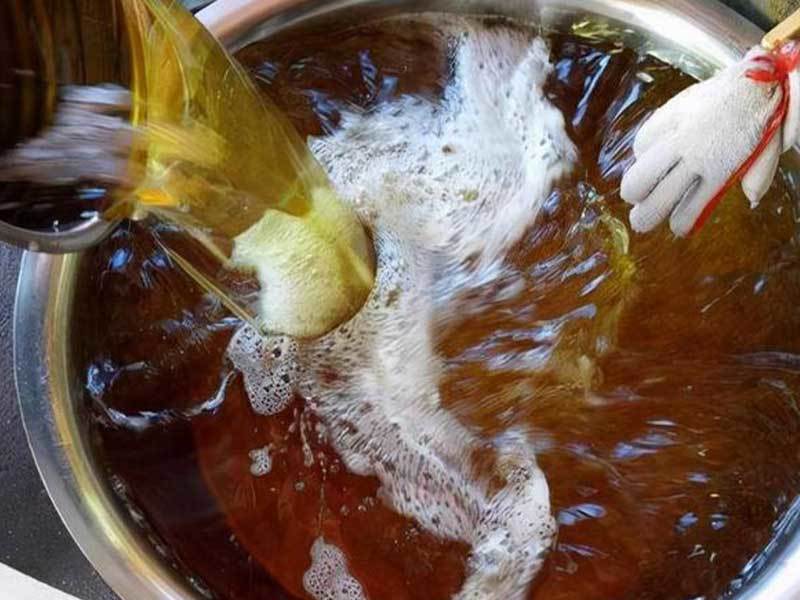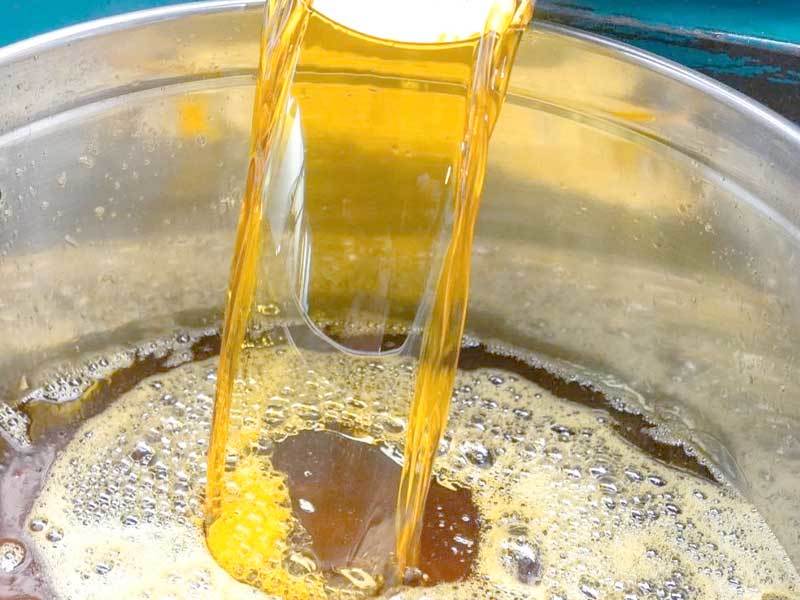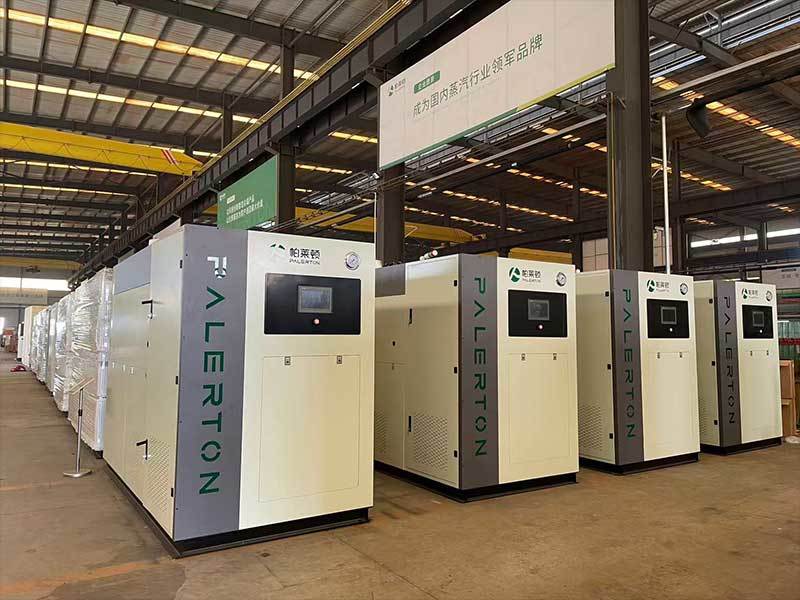
The "Oil" on the Road to Weight Loss: A Better Life Starts with a Composite Cabin Micro-Superheated Steam Generator
The National Health Commission's "Guidelines for Weight Management" released to the public indicates that if not effectively curbed, the adult overweight and obesity rate in my country will reach 70.5% by 2030. Gradually, many people have begun sharing their weight loss stories on social media platforms in response to the national call. This has led to a growing public interest in the quality of edible oils. For oil extraction companies, ensuring high-quality oil and efficient production is crucial to standing out in the fiercely competitive market. In traditional oil extraction processes, steam is primarily used to soften the oil and adjust its moisture content. Steam treatment loosens the oil's cell structure, making it easier to separate the oil from the oil. Furthermore, maintaining an appropriate and stable moisture content effectively prevents problems such as burning the oil or low oil yield during extraction. However, traditional processing equipment has numerous limitations and cannot fully meet the stringent requirements of modern oil extraction companies for high-quality, efficient, and cost-effective production.
In traditional oil extraction processes, steam is primarily used to soften the oil and adjust its moisture content. Steam treatment loosens the oil's cell structure, making it easier to separate the oil from the oil. Furthermore, maintaining an appropriate and stable moisture content effectively prevents problems such as burning the oil or low oil yield during extraction. However, traditional processing equipment has numerous limitations and cannot fully meet the stringent requirements of modern oil extraction companies for high-quality, efficient, and cost-effective production. The advent of the composite chamber micro-superheated steam generator offers a new approach for oil extraction companies. For example, when processing peanut and soybean oils, the intelligent temperature control system can stabilize steam between 120-130°C, reducing the moisture content of the oil to 2%. This softens the oil cells to facilitate oil separation while preventing high temperatures from damaging the raw material's activity, preserving the oil's fatty acids. The composite chamber micro-superheated steam generator boasts a thermal efficiency of 101.21%, saving approximately 40% energy compared to traditional equipment, while also reducing space and maintenance costs. The stable steam pressure ensures stable and efficient oil production lines, reducing production costs for companies.
The advent of the composite chamber micro-superheated steam generator offers a new approach for oil extraction companies. For example, when processing peanut and soybean oils, the intelligent temperature control system can stabilize steam between 120-130°C, reducing the moisture content of the oil to 2%. This softens the oil cells to facilitate oil separation while preventing high temperatures from damaging the raw material's activity, preserving the oil's fatty acids. The composite chamber micro-superheated steam generator boasts a thermal efficiency of 101.21%, saving approximately 40% energy compared to traditional equipment, while also reducing space and maintenance costs. The stable steam pressure ensures stable and efficient oil production lines, reducing production costs for companies.
The intelligent control system of the composite chamber micro-superheated steam generator enables integrated and precise control of water, air, and power supply. This eliminates the resource waste associated with manual operation of traditional equipment, reducing steam consumption to as low as 75 Nm³/h per ton. This significantly reduces costs and makes the composite chamber micro-superheated steam generator a key driver for cost reduction and efficiency improvement in the oil extraction industry.
Furthermore, the composite chamber micro-superheated steam generator can also be used in the degumming and bleaching processes of oil extraction plants, accelerating the separation of phospholipids from oil, reducing the use of chemical reagents, reducing residual impurities, and improving the light transmittance of the finished oil.
Related News
The exceptionally low emissions of the compound chamber slightly superheated steam generator are primarily attributed to the innovative design of its water-cooled fully premixed burner, particularly its air chamber and premixing structure. Through precise control, the system achieves an optimal air-to-gas ratio of 10:1—a golden proportion that ensures thorough combustion. Furthermore, the burner achieves a 100% fuel combustion efficiency, meaning all combustible components are completely burned, thereby preventing the generation of pollutants such as nitrogen oxides (NOx) and carbon monoxide (CO) caused by incomplete combustion. This highly efficient and clean combustion process not only reduces environmental pollution but also enhances energy utilization efficiency. At the same time, it significantly improves operational safety for users. This represents a major breakthrough in environmentally friendly technology within the steam generator industry.
The Critical Role of Steam Generators in Douchi Production
Steam generators empower traditional techniques through technology, enabling douchi—this ancient condiment—to retain its authentic characteristics of "delicious flavor and well-balanced salinity" even in industrial production. Meanwhile, standardized control ensures consistent quality, striking a balance between tradition and modernity at every stage of the process, and allowing the rich, savory aroma of douchi to endure.
What are the characteristics of the electric steam generator?
Overall, electric heating steam generators demonstrate significant advantages in efficiency, operation, and environmental protection, making them the preferred choice for upgrading equipment in many industries today. With the deepening of green production concepts and continuous advancements in electrical technology, they are bound to play an important role in more fields, injecting strong momentum into the sustainable development of the industry.
Can steam generators be used in the catering industry?
The steam generator, with its efficient heating capacity, excellent retention of food nutrients and flavors, reliable disinfection functions, and significant energy-saving advantages, can fully meet the various needs of the catering industry in terms of cooking, safety, and cost control. It is the ideal equipment choice for the catering industry to improve efficiency and ensure quality.
Why can steam generators be used in tableware cleaning processes
In general, the steam generator has become an innovative choice for the dishwashing process due to its multiple advantages of high efficiency, cleanliness, safety in disinfection, and energy saving. It not only strengthens the food safety defense line for the catering industry but also demonstrates its irreplaceable value in cost reduction, efficiency enhancement, and green development, pushing the dishwashing process towards a new stage that is more scientific and efficient.
What is the role of the steam generator in the fabric production process?
From preprocessing to final shaping, the compound chamber slightly superheated steam generator , with its advantages of precise temperature control and high energy efficiency, has become an important driving force for upgrading the textile industry. In the future, with the continuous advancement of textile technology, this efficient and eco-friendly steam generation equipment will undoubtedly play a key role in more fabric production scenarios.



